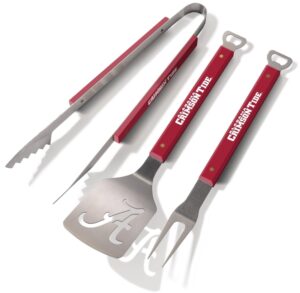There are different kinds of 3-3-5s; having said that, the kind Joe Kines likes to use is my favorite for attacking spread teams.
Unfortunately, defenses built to do one thing are typically vulnerable against something else. Kines' 3-3-5 wasn't built well to handle a team that ran the ball with authority.
Kines' 3-3-5 was built on an inside-out philosophy with a DL technique called "opposite shoulder." The short story here is that it funneled everything to the sidelines. Most defenses funnel inside, where there are more bodies and where the LBs can clean up. Kines' defense was safety-friendly.
It works when you have the right people running it. When you're talent-deficient, however, it's a big-time problem -- especially if you don't have speed on the corners. If you funnel outside but don't have the speed to clean up, you're toast.
The biggest issue with Joe Kines is that he was a bad recruiter. And I mean just plain bad. The 2005 defense was one of my favorites at UA, but it also had the benefit of four future NFL starters in the secondary. By 2006, when three of those four were gone and probation was starting to have an effect, the second team secondary was comprised of Eric Gray, Sam Burnthall, Bryan Kilpatrick (walk-on), and a pair of true freshmen named Marquis Johnson and Justin Woodall, neither of whom played a bunch, along with a young Rashad Johnson.
Part of that talent problem was attributable to probation, but part was also misevaluations come home to roost. Lionel Mitchell didn't have the mindset for SEC football. Chris Rogers, for whatever reason, has never made an impact. Andy Davis quit the team and went home. The best DB signee during that era is going to end up being Arenas, a kick returner. The only other candidates are Woodall and Johnson. The best that ever played for Kines (of the ones that the Shula staff signed) is probably JUCO signee Jeffrey Dukes -- if you don't count Cory Reamer, who is now a LB. Four starters out of four recruiting classes, quite frankly, stinks.
The other thing with the 3-3-5 is you can't turn it on and turn it off. The OLBs are too different. OLBs under Kines for 2006 were Terrence Jones, Juwan Simpson and Demarcus Waldrop. Waldrop was smaller than Rashad Johnson. Jones would have no role for Saban other than on special teams. OLBs under Saban are Fanney (around 250-260 pounds) and Cory Reamer (225), and Reamer is a situational player. He's the guy they take out to get the fifth DB on the field in the nickel, and I expect Jerrell Harris to play more in 2009.
The biggest issue with Kines' 3-3-5 is that it's difficult to recruit DL to it, no matter who is doing the recruiting. The DL are placeholders. Dominic Lee played 12 or 13 games one year and ended up with something like four tackles, maybe less. That's a big reason Alabama had to rely on guys like Rudy Griffin in those years, because they weren't getting great DL talent. And when they did (Lee), Buddy Wyatt, who did one of the worst assistant coaching/recruiting jobs in the recent UA history, couldn't develop them.
Now, if you take Alabama's current defense, a 3-4 over/under that shifts to a 4-2-5 in nickel and either 4-1-6 or 3-2-6 in dime, the personnel is built differently and the DL technique is different. The advantage is that Saban's defense will almost always trigger more big plays, but the disadvantage is that it will give up big plays. Kines' defense was a true bend-not-break defense that kept everything in front of it.
If the entirety of college football starts to move in the direction of the spread, defenses will be forced to change, even Saban's. Right now, Saban is trying to fight the battle with talent, and to coach something he has personal knowledge about (the 3-4 over/under) and is more comfortable working with.


